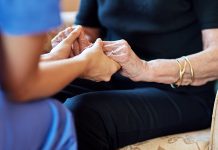The latest graduate destination survey of mid-year graduating registered nurses shows a bumper 82 per cent had jobs within ten weeks of sitting state finals but only half of the enrolled nurse graduates.
July graduates are surveyed at the end of September each year by NETS (Nurse Education in the Tertiary Sector) to see how many have found nursing jobs.
This winter was marked by frustrated public hospital nurses taking historic strike action to highlight safe staffing concerns that prompted an extra $38 million in Government funding to boost nursing staffing for the short-term relief of workload pressures. It also prompted the signing of the Safer Staffing Accord on July 30 with the first of three commitments being to present options to the Health Minister by last week on exploring options for employing all registered nurse (RN) and enrolled nurse (EN) graduates.
The NETS survey found that 82 per cent (350) of the 430 midyear RN graduates who passed the state final exam – sat just days after the July 12 nationwide DHB nursing strike – reported being successful in getting a nursing position by September 30.
But for their enrolled nurse colleagues only half (48) of the 96 July EN graduates reported being employed as nurses, with 30 (31.25%) of them still job-hunting compared to just 5.8 per cent of the RN graduates. Both groups of graduates had the same number of graduates not seeking nursing work – 17 – but this was the equivalent of just 4% of the RN graduates compared to 17% of the EN graduates.
The vast majority of the RN graduates were employed through NETP (nurse entry to practice) programmes, nearly 40 in NESP (new entry to specialist practice) positions in mental health, 26 had found non-NETP positions (mostly in residential aged care) and two were working in Australia. The most common setting for NETP positions were medical and surgical wards (70 and 93 respectively) followed by 26 in perioperative care, 10 in primary health and 10 in residential aged care.
The most common practice setting for the 48 ENs who gained nursing work was mental health (11) followed by nine in residential aged care, nine in district nursing, four in private agency nursing and one in Australia.
Employment rates for the eight nursing schools with RN mid-year cohorts varied from 40% to 99% and for the six nursing schools with EN mid-year cohorts from 23% to 77%.
Only one EN graduate (1%) did not complete the survey compared to 35 (8%) of the RN graduates.
Data is not yet available on the Nursing ACE mid-year intake for NETP positions which includes not only mid-year 2018 RN graduates but also graduates still job-hunting after completing their degrees in 2017.





















